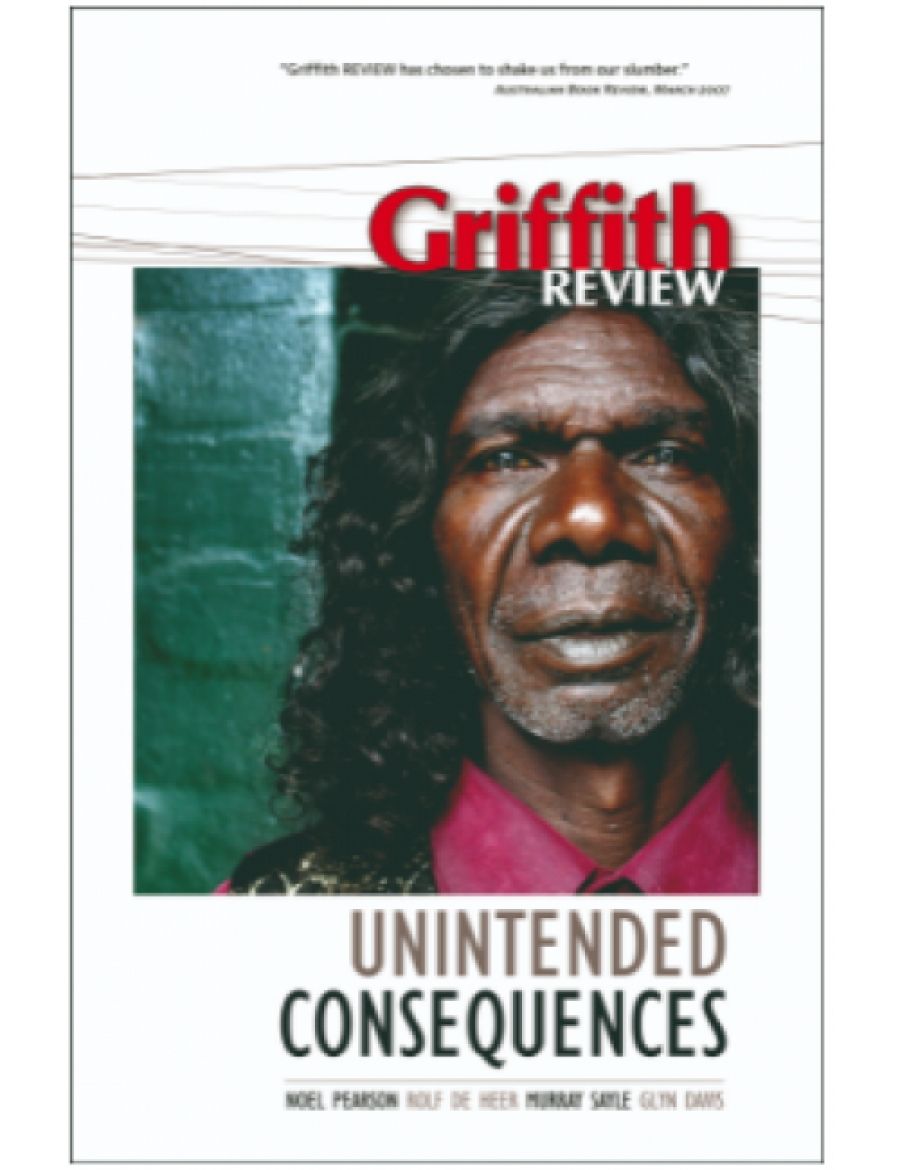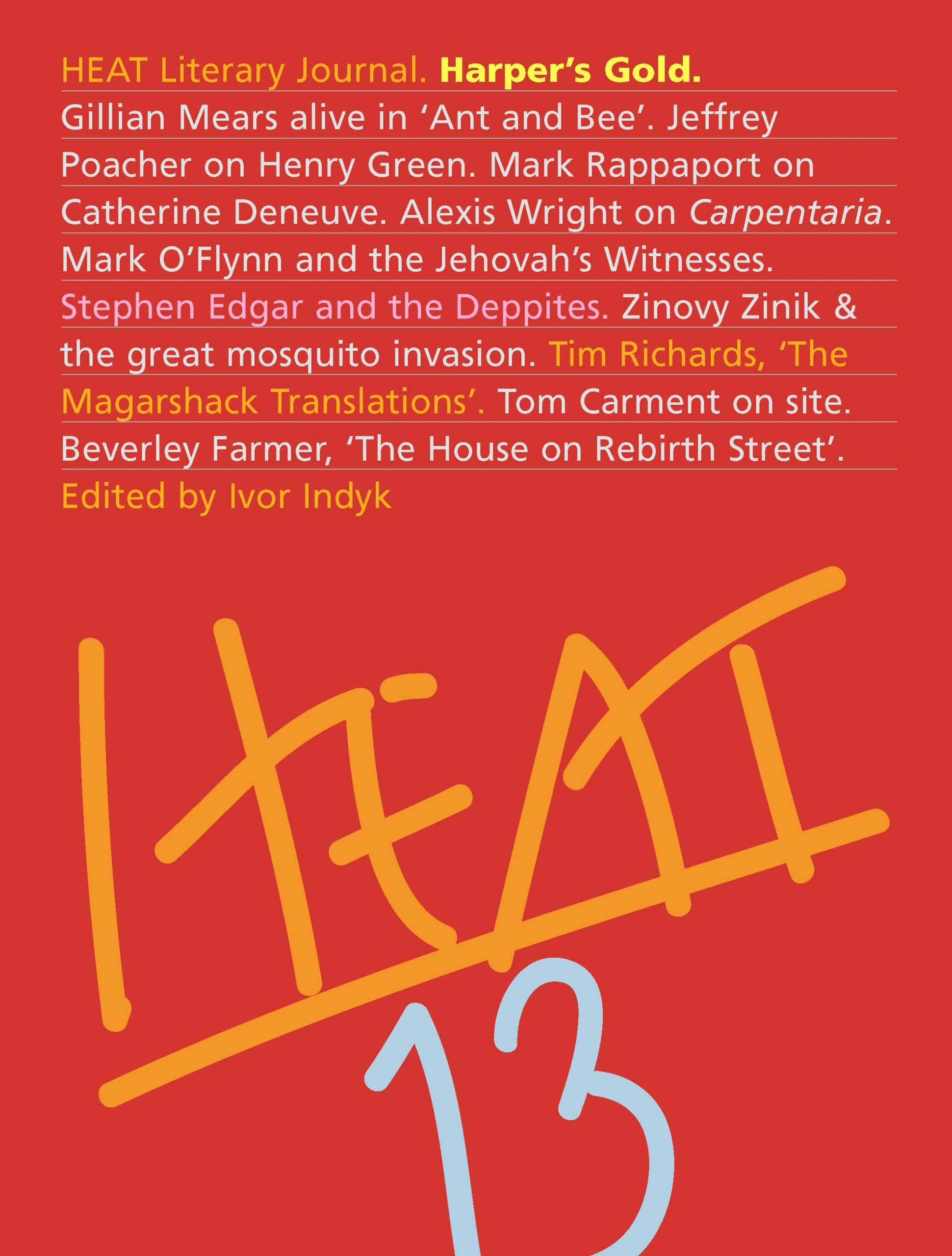
- Free Article: No
- Contents Category: Journals
- Review Article: Yes
- Article Title: Public and personal
- Online Only: No
- Custom Highlight Text:
On the fortieth anniversary of the 1967 referendum, the Weekend Australian editorial devoted considerable time to savaging the dominant 1970s model of indigenous development, most closely associated with Nugget Coombs: a ‘neo-pastoralist dream [that was] philosophically flawed, a fatal fusion of romanticism and Marxism’. Helen Hughes, in an excerpt from Lands of Shame in the same newspaper, echoes the sentiment, labelling the re-creation of remote communities ‘reverse racism’. Hughes writes: ‘a few courageous leaders are demanding an end to welfare dependence, but their voices are drowned out by articulate élites.’ Enter Noel Pearson, whom the paper’s editorial applauds, along with John Howard. The Australian also published an edited version of the fifty-page article ‘White Guilt, Victimhood and the Quest for a Radical Centre’ that appears in Griffith Review 16. ‘White Guilt’ puts flesh on Pearson’s well-known objection to welfare and his emphasis on individual indigenous ‘responsibility’. He looks to early black-American models of liberation, including those of Booker T. Washington and W.E.B. Du Bois, for inspiration. It will surprise no one to learn that Pearson favours Washington’s approach, in which ‘blacks should secure their constitutional rights through their own moral and economic advancement’, over Du Bois’s call for ‘ceaseless agitation’. Pearson firmly believes that public policy should encourage the most disadvantaged people in society to change the way they think about themselves, rather than the way the majority thinks about them. While acknowledging that racism originates at a systemic level, Pearson argues that it is a ‘terrible thing to encourage victims … to see themselves as victims’. The consciousness of Bill Cosby, he suggests, would be a good role model. Pearson draws extensively on the black American Shelby Steele, who argues that white guilt, in the form of affirmative action, for example, erodes black agency by making blacks feel helpless: ‘agency’, Steele believes, ‘is what makes us fully human.’
- Book 1 Title: Griffith Review 16
- Book 1 Subtitle: Unintended consequences
- Book 1 Biblio: ABC Books, $19.95 pb, 264 pp, 9780733321221
- Book 2 Title: HEAT 13
- Book 2 Subtitle: Harper's Gold
- Book 2 Biblio: Giramondo, $24.95 pb, 240 pp, 9781920882242
- Book 2 Cover Small (400 x 600):

If the reader were in any doubt as to the terrible conditions in Aboriginal communities, photographer Dean Sewell’s disturbing series ‘The Block’, documenting life in Redfern and placed within Pearson’s essay, clears that up. Pearson takes a swipe at Kevin Rudd for his failure to achieve meaningful land rights in Queensland under Wayne Goss in 1991, though Howard remains unscathed. Somewhat surprisingly, Pearson concludes by arguing that black Australia needs to develop its ‘rights’ agenda, in much the same way as he has developed its ‘responsibility’ agenda. An inevitable frustration with this analysis is that Pearson overlooks the government’s role in co-opting his ‘responsibility’ agenda to discredit the ‘rights’ agenda: to dismantle Aboriginal representation, through the abolition of ATSIC; and to fail to provide genuine land rights – causes that Pearson claims to champion. Pearson concludes with a ‘senior federal minister’s’ aside: ‘I just don’t understand the indigenous rights stuff.’ This is the fault, the responsibility, of indigenous leadership, Pearson claims, not a product of that minister’s ignorance, wilful or otherwise.
Several other essays in this issue, subtitled ‘Unintended Consequences’, are essential reading because they identify social causes and effects. Margaret Simons’s determination to uncover the government procedures which led to the placement of a twice-convicted paedophile in her neighbourhood inspires a piece of reportage which typifies an older-style of essay that the Griffith Review may be trying to revive. It conjoins investigation, theory and personal reflection. The best examples of the genre, scattered throughout Australia’s journals, often uncover ugly truths. Bernie Matthews’s account of childhood wards of the state demonstrates the link between institutional abuse and criminality – or perhaps, in Pearson’s terms, personal irresponsibility – and can be seen as a subtle rebuttal of Pearson’s argument. Murray Sayle’s essay on Che Guevara makes fascinating reading. James Halford’s reading of Ecuador, and of the importance of Venezuelan leader Hugo Chavez to that country’s leftist government, is both rigorous and poetic. Glyn Davis finds an Australian connection with the visionary American architect Bernard Maybeck; like other Griffith Review contributors, he seeks to place Australian cultural history within international intellectual movements – no bad thing. Jennifer Kremmer’s memoir on her daughter’s battle with Rett Syndrome beautifully depicts the unique desperation of parents with troubled children. Georgia Blain’s fiction, also mournful, is another highlight in this exceptionally well-rounded magazine.
There is a strain of eccentricity in HEAT 13: Harper’s Gold. Narrators are frequently at a remove from society and liable to become obsessed with a figure, object or notion. Film-maker Mark Rappaport relates his brief encounter with actress Catherine Deneuve in a New York flea market and explains, in a good-humoured way, how her films framed his life; Tim Richards’s protagonist, Tess, criss-crosses Victoria, looking for some evidence of her father’s life reciting Gogol in pubs; and Jeffrey Poacher believes ‘books, like cats, sometimes find us’. He is found by the novels of Henry Green. Poacher’s incisive observation of Green’s writing might be applied to ‘Harper’s Gold’: ‘because of this chaos and oddity, [Green’s novel] Party Going cultivates a readerly sense of tolerance – a recognition that we must put up with mystery, that we must endure ignorance and mistake, both in others and in ourselves.’
The odd, tolerant tales are sometimes too self-conscious and self-referential. However, as if to demonstrate that the personal, meditative narrative can envelop broader social questions, we have Gillian Mears’s autobiographical ‘Alive in Ant and Bee’, which was short-listed for the 2006 Calibre Essay Award. Mears survived a severe heart infection at the age of thirty-seven but, on recovery, was diagnosed with multiple sclerosis. She then found herself living in a unit (‘Brickland’), on a weekly $228 disability pension. The reader is inclined to wonder what he or she would do, faced with the same situation. Mears heroically takes to the road in a 1970s F100 ambulance, coloured Harper’s Gold, which she crowns ‘Ant and Bee’, and which she modifies so that it can produce solar power and bake fresh bread. Like most HEAT writers, she tugs at life’s eternal unknowns through art, but finds ultimate comfort in the call of forest birds and in the moon’s reflection in her water bucket: ‘to think that it was only due to catastrophe that I’ve chosen this way to live.’
Other stand-outs include Tony Elias’s ‘The Immigrant’ and Mark O’Flynn’s ‘White Light’. Elias tells the story of Hassan, a Lebanese man who arrives in Melbourne in 1969. Though Hassan weans himself off his native cigarettes, which upset fellow tram-travellers and are impossible to buy, becoming ‘a Winston man’, his Australian life is fuelled by something like a nicotine rush; Hassan accrues money and prestige, in order to take his family home. O’Flynn’s narrator, Shazza, is a Jehovah’s Witness who is so naïve as to beggar belief. On falling for Troy, she reflects, ‘for someone who slept in bus shelters Troy always seemed to have plenty of money’, but as in the Romantic tradition, her childish perspective allows the odd, supremely wise insight. Tom Carment’s artworks, ‘On Site’, produced at the construction site of the City of Melbourne headquarters, are both beautiful and real, as if that were always possible.
Alexis Wright recounts her roundabout search to find the right way of writing Carpentaria, but could have been more succinct. Much of ‘Harper’s Gold’, however, both good and bad, exhibits this stubborn determination to find its own way to subject matter, lending the journal a distinctive quality. If there is anyone who still spends their Sunday afternoon by a sunlit window hoping to join Australian writers in contemplating the universe, HEAT should be their companion. It seems designed for a middle-aged reader with a fine education in European culture. Yet I am glad that HEAT exists as is, because literary journals need distinctive identities, and this one is open-minded and liberal. Lastly, though no doubt contributing to its relatively high price, the well-spaced typesetting and layout make HEAT easy to read – even, miraculously, in bed, on one’s side.


Comments powered by CComment